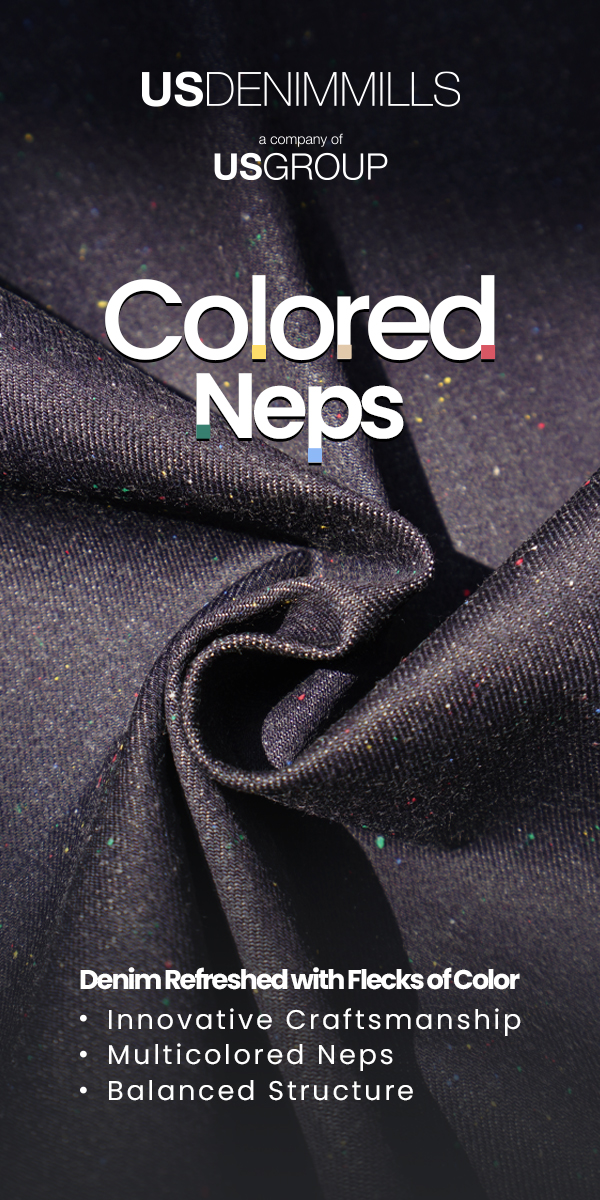New fibres in the loop

The need to increase fibre-to-fibre recycling and lack of progress in achieving this is being called out by every sustainable fashion industry coalition and report. A few forward-thinking entrepreneurs have devised inherently circular business models, offering services and solutions to bring a product from A to Z and back again.
Tellingly, the European Commission’s directive for the fashion industry is called the EU Strategy for Sustainable and Circular Textiles. It is part of the?European Green Deal, as well as the Circular Economy Action Plan. The need to increase the rate of recycling textiles into textiles, from barely 1% today, is central to its policy. Measures in discussion span the entire lifecycle of products, from mandatory minimums for the inclusion of recycled fibres in textiles, which would be part of the?Ecodesign for Sustainable Products Regulation, to the revision of the Waste Framework Directive, with the goal of removing barriers to the creation of a transnational recycling infrastructure.
The aim, the Commission plainly states in its communication to the EU parliament, is to “mobilise designers, producers, retailers, advertisers and citizens in re-defining fashion”.
This has led, for instance, to the installation of bins in stores for consumers to drop off the goods they no longer want, seen at adidas, Uniqlo, H&M and Ikea, to name just a few. But these schemes have been found to be less than adequate. Most often, the discarded items are redirected to charities and waste collectors; the likelihood that they might be recycled into new fibres is low. There is probably a better chance they will show up in the heaps of clothes polluting the beaches of Ghana or the deserts of Chile.
Re-defining fashion
Re-defining the fashion system itself may be what is needed to make the industry shift from a linear to a circular economy.
Companies, such as OceanSafe and Noosa Fiber, have already begun to offer brands and retailers a fast-track solution to keeping textiles in the loop. Each has created a new, all-encompassing approach to product management. They share some common characteristics. Both have developed a novel fibre that is a polyester alternative and both guarantee that they can trace, retrieve and recycle the products made through their systems into new fibre. Both companies were founded in 2019 and claim to have secured industrial-scale production for their novel material.
The two main pillars of the closed-loop system devised by Noosa Fiber founder Luna Aslan are, for one, a fully biobased polylactic acid fibre (PLA) derived from corn, and, second, a patented chemical recycling process that turns it back into virgin-grade PLA. The fibre is currently produced in China and in Austria, but the Brussels-based start-up is also seeking funds to establish its own plant in Belgium, or possibly in the north of France. “Our partners have the capacity to produce as much as we need,” Luna Aslan tells WSA. The young team has been working with spinners and knitters to help them integrate the fibre, which is not widely used in textiles, and thus expand its supplier base. Convincing mills to adopt a new polymer is a long process. “It is a new fibre in apparel, so we are having to provide our partner mills with guidance in dyeing and processing,” she says. Enlisting weaving mills is next on Noosa’s to-do list.
Manuel Schweizer, a textile industry veteran who worked mainly in home textiles, is the founder of OceanSafe, headquartered in Switzerland. He introduced the first Cradle-to-Cradle (C2C) certified home textiles and has adopted that framework as the basis for the OceanSafe system. Its core product is a new polyester-based copolymer he developed called naNea. “It is the first synthetic yarn to obtain C2C gold certification,” says Matthias Fuchs, chief marketing officer. “Our founder believes Cradle-to-Cradle to be the most coherent and strongest certification, and the only one that can make circularity a reality.” All products available within the OceanSafe ecosystem, which includes components and trimmings, are certified C2C gold or platinum, as the silver and bronze levels do not make the cut. “Gold and platinum cover all chemicals used in the products; this means we know every single chemical and additive used, and we can offer full, gapless transparency,” says Mr Fuchs.
There may be some advantages to developing these disruptive concepts from a clean slate, but it has also created “tonnes of restrictions,” he says, noting that C2C certification takes a holistic approach covering criteria related to water usage, carbon emissions, social conditions, chemicals, global warming, health and more. “We have created a new polymer, and polymers often involve the use of hazardous chemicals. It has been a difficult goal to achieve, but it was absolutely our ambition to do so. We consider ourselves a textile technology company and we are based in Switzerland, a country known for its engineering skills,” he says.
NaNea is produced by established international synthetics manufacturers in south-east Asia. OceanSafe doesn’t reveal the name of its partners, but says its polymer is a drop-in solution that does not require any special equipment, can easily be scaled and is market-ready. “It is slightly more expensive than a conventional polyester, but mostly because of scale,” says Mr Fuchs. “If we scale up, our prices will align with those of other branded polyesters.”
Performance properties
As variations on polyester, both fibres have properties similar to the world’s most used synthetic yarn. “NaNea is slightly more hydrophilic than conventional polyester, and has similar pilling values. It is quick-drying, durable and inherently flame-retardant. There is no compromise on quality,” says Mr Fuchs. From its initial focus on home textiles, OceanSafe has since widened its scope to apparel, upholstery, automotive and technical textiles. As evidence of its high performance, naNea will be used by the Swiss army in some of its uniforms. “There was a long and meticulous testing process, but we passed. We wouldn’t want to make inferior-quality products with OceanSafe; increasing wear is the single most effective way to reduce a product’s impact,” he says.
Ms Aslan says that Noosa Fiber’s PLA is breathable and does not retain odours. It can also claim to be bacteriostatic and hypoallergenic, and possesses UV-stability and low-flammability. The company does not recommend blending it with polyester, as “that would cancel out the useful properties of our fibre,” she says, adding that PLA is used for surgical sutures, a sign that it is safe and can be absorbed by the body.
Both fibres are biodegradable. Neither company emphasises this characteristic, though it does, to a certain extent, inform their strategies and policies. “If an additive is needed, we recommend it be biosourced and biodegradable,” says Ms Aslan.
In the early stages of the development of OceanSafe, “biodegradability was one of the end-of-life scenarios we promoted,” says Mr Fuchs. Tests were even conducted at industrial composting facilities that would take clothes. “But according to the notion of waste hierarchy, disposal is the last resort before incineration. When we saw the possibilities of chemical recycling, which is not downcycling, we shifted to that option,” he says. The company did not want consumers to imagine they could dispose of their clothing themselves by composting them. “Biodegradability is essential,” insists Mr Fuchs, “but not for the end of life of a product. It provides a solution for fibre-shedding. If an OceanSafe garment releases microfibres, these will biodegrade and won’t be toxic, as we know that all the chemicals we use are safe for biological systems.”
Circular business models
The business models developed by both start-ups have embedded circularity into their make-up. From the very start, Noosa Fibers says it guarantees that every textile made from Noosa that is made available for collection will be fully recycled into a 100% virgin fibre using its patented chemical recycling technology. The process involves shredding and solubilising the feedstock to extract Noosa fibres from other compounds, and a hydrolysis process that turns them back into lactic acid, which is then purified and polymerised to be extruded into a virgin fibre.
The Belgian start-up’s closed-loop concept is not closed per se but open to varied solutions. “We can take back industrial waste, as well as overproduction and leftover stock,” says Ms Aslan. Post-industrial waste is already recycled by its partner in China, a vertically integrated producer. She says that 50% of textile waste is generated during manufacturing, and easy to recycle, as “we know the material”. Recycling the remaining 50% will depend on the strategy of its brand customers. “They can set up take-back systems in exchange for coupons, and they can offer repair services. When used Noosa-made clothing comes back to us, it may actually be embarking on a third life,” she notes. The company is also open to mechanical recycling, but Ms Aslan says this has limitations. “You can only integrate 30% of recycled content into a new yarn. The remaining 70% would need to be chemically recycled.”
OceanSafe’s naNea can be mechanically or chemically recycled with conventional polyester and PET. “We are not creating a new or different waste stream,” says Mr Fuchs. The company is also focusing on chemical recycling as a way to maintain the high quality of its fibre.
Its business model offers customers two solutions. The easier of the two is to simply source naNea fibres or yarns from licensed manufacturers in Asia, and integrate them into their own supplier network. The end product will carry a composition label that says “100% polyester, biodegradable” but not the OceanSafe Certified or Cradle-to-Cradle Certified Gold logos.
The second, full-circle solution for brands is that they source not only a material but a finished product that will be manufactured according to Cradle-to-Cradle Gold guidelines from start to finish. Each individual component will be 100% Cradle-to-Cradle Gold certified, down to the sewing thread, print, embroidery, care label, and so on. OceanSafe has put together a component kit that designers and brands can choose from when developing their ranges. This scenario also demands that a brand set up a take-back system; this is a rule in its licensing agreement, says Mr Fuchs. A QR code on the products will provide consumers with information on how to return them at their end of life. OceanSafe will then take care of recycling them. This is, in a nutshell, the “gapless” and transparent framework that OceanSafe has set up.
The Swiss company will soon be adding a second circular fibre to its product line-up. This new polymer, coNea, will be a cotton alternative. “NaNea is not perfect,” says Mr Fuchs. “It is petrochemical. Our next generation fibre will be 100% biobased, biodegradable and Cradle-to-Cradle Gold certified.” The patented polymer was developed with the Technical Textile Institute (ITA) of the University of Aachen and is now in industrial trials. OceanSafe expects to launch it in early 2024. Mr Fuchs says it has a different, softer hand-feel compared to naNea.
Best use cases
These novel circular systems may become common when the notion of an extended producer responsibility becomes the norm. But until then, brands and retailers may consider the restrictions they imply, on composition and make, as too complicated and disruptive.
Workwear, however, is a sector where closed-loop systems are already in place. So-called ‘merch’, the assorted T-shirts, tote bags and other merchandise sold at concerts, events or festivals, is another area where these concepts could work well. Noosa Fiber already sells thousands of white T-shirts for events looking for a circular solution for their goodies. It was used to make the tops worn by the volunteers at the recent edition of ChangeNow in Paris. “It is a way to test the concept in real life,” says Ms Aslan.
An easy entry point into these novel closed-loop systems is to choose to make a simple product, such as a T-shirt or a fleece jacket, as Mr Fuchs points out. Sports and outdoor brands that are looking for a solution to their “polyester issue” are keeping their doors open, he says. These brands will not be able to rely on recycled polyester made from PET bottles and may be happy with a greener polyester alternative. “NaNea is perfect for outerwear. It offers quality, longevity, moisture management, UV resistance, and resistance to wear and tear,” he says. Ultimately, he argues that OceanSafe should be used for mainstream products, not luxury items. “Our fibres should be fast fashion fibres, and not only for Western markets, but also for India, China and Indonesia.”
While demand is high, Ms Aslan notes that “there are very few truly circular business models and they haven’t been proven to be economically viable”. Yet, she says: “If no one creates them, we won’t know if they work or not.” The rare new fibres to come to market have included circularity as a founding principle, as Swiss chemicals company HeiQ has done for its manmade cellulosic fibre AeoniQ. Furthermore, brands and retailers may in time be required to manage the entire lifecycle of the products they market. Meanwhile, EU regulation and legislation is paving the path to make these all-encompassing circular systems a reality.
Noosa Fiber has patented both its fibre and its chemical recycling process.
Credit: Noosa Fiber













